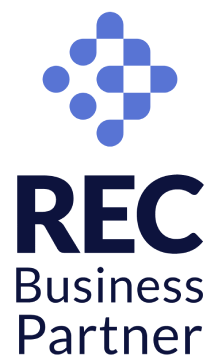What is International Women’s Day 2024 celebrating?
International Women’s Day (IWD) is an international celebration held on March 8th focusing on women’s rights. Centering around a yearly theme, IWD ignites conversations on gender equality, reproductive rights and abuse against women. The theme this year is Inspire inclusion.
Inclusion is about creating an environment where nobody feels excluded, no matter their background or the barriers they face. This means everybody has equal access to opportunities and resources, but most importantly it means all individuals feel psychologically safe.
What does inclusion look like in business?
A culture where women and non-binary people are truly included looks like this:
- They are present throughout the business (physical inclusivity)
- They feel confident to raise their ideas/concerns (psychological safety)
All types of women and non-binary people are physically included and made to feel psychologically safe (intersectional inclusivity)
How to inspire inclusion in your company
Inclusion starts before your employees even arrive. Inclusive recruitment is a contentious topic for many – with the long-debated diversity quotas coming up time and again.
But inclusion isn’t about ticking boxes – it’s quite the opposite. It’s about removing barriers to entry. These barriers might not be what you’re imagining, as recruitment practices often mirror the assumptions of the company itself – maintaining the less visible barriers which actually stunt diversity.
For instance, you might have a sharp focus on reaching young women from a different socioeconomic background, but do you know how to hire and support neurodiverse talent? You may not even know this needs to be a focal area, meaning your diversity goals have more to be desired.
Here are 4 things you can do to attract a wider net of talent:
- Move away from gender-coded language in job adverts – replace a few ‘essential’ skills with ‘preferable’ or ‘nice to have’, consider cutting down on words like ‘competitive’ or ‘ambitious’ in favour of more neutral words like ‘care’ and ‘commit’, and do some testing to see how different job ads pull in different people.
- Include more women in your interview panel – seeing representation in your company can make your candidate feel more of a connection to your company, and you’ll likely get some more fitting questions thrown, too!
- Get a second opinion – you might be too close to see which demographics your recruitment process is failing to attract. Ask around.
- Follow up with candidates who refuse your offer – these are possibly the most valuable candidates you will interview. Is there something in your job ad, interview process or overall culture that put them off? Feel out your blind spots.
Getting your culture right
Creating a culture that welcomes and nurtures women and non-binary people is how you inspire inclusion year-round.
Here’s 6 tips to build a more inclusive culture:
1. Analyse pay gaps
See if your company has pay gaps across gender, race and other intersectional factors – often, pay gaps result from disparities in seniority, which leads us to…
2. Light the path to progression
Often, women and non-binary people miss out on opportunities to progress in their career not though lack of ambition but through lack of clarity.
Clearly conveying paths to progression will help to nurture all your employees. You could provide professional development opportunities during work hours, have regular 1-to-1s, or even assign some mentors within the business.
3. Consider health factors
For example, menopause gets a lot of airtime in the HR discussion nowadays, and for good reason! Major changes in hormones affect everything from temperature to cognitive function.
Do you have any support in place for women or gender non-conforming people going through difficulties with their health? Are people open to talking about it if they are going through major changes like this?
Be sure to respect privacy around these issues whilst making support available.
4. Examine gender bias
“…Research from Yale that had scientists presented with application materials from a student applying for a lab manager position and who intended to go on to graduate school. Half the scientists were given the application with a male name attached, and half were given the exact same application with a female name attached. Results found that the “female” applicants were rated significantly lower than the ‘males’ in competence, hireability, and whether the scientist would be willing to mentor the student.” – Scientific American
Gender bias, much as we would like to think it’s not, is very much still around – and it can affect recruitment, performance reviews, and promotions!
The best way to deal with bias is not to ignore it, or shame it, but to examine our actions, unearth our assumptions and analyse their realism.
5. Create anti-harassment policies tailored around real people
Build these by consulting with the women/non-binary people in your company. Listen to any experiences they may have had in previous organisations, or even at your own.
6. Support new parents in the workplace!
- Retention rates for new mothers are generally pretty shocking, with 40% of new mothers working full-time pre-pregnancy not returning to their previous employer, research indicating that in half of these cases the birth of their child was the ‘cause’.
Building a culture that includes new mothers starts with examining flexible working policies, looking at the types of events you run and – if you want to make a real difference to society – looking at your paternity leave policy.
You can find out more about supporting new mothers in our podcast with Lizzie Martin, founder of Work Life Mother.
Ultimately, inspiring inclusivity starts in understanding the needs of your team members. To support women and non-binary people across all these different factors – pay, progression, health, recruitment, psychological safety, pregnancy and parenthood – you need to have your finger on the pulse.
Listen to your team, and let their feedback be your guide to building a more inclusive culture – not just on International Women’s Day, but every day of the year.





